Large-Sized GaN Crystal Growth Analysis in an Ammonothermal System Based on a Well-Developed Numerical Model
Abstract
1. Introduction
2. Numerical Model and Mathematical Method
2.1. Geometric Model of the Ammonothermal System
2.2. Governing Equations
2.3. Numerical Setup and Boundary Conditions
2.4. BP Neural Net and NSGAII Algorithm
3. Results and Discussion
3.1. Searching for the Optimal Heater Powers
3.2. Heat and Mass Transfer Comparison of Original and Updated Models
3.3. Large-Sized GaN Crystal Growth Analysis
4. Conclusions
Author Contributions
Funding
Institutional Review Board Statement
Informed Consent Statement
Conflicts of Interest
Nomenclature
| ρf | fluid density (kg/m3) |
| Cmax | maximum concentration (mol/m3) |
| T | temperature (K) |
| Mmeta | molecular weight of the metastable species (kg/mol) |
| mass source (mol/(m3s)) | |
| surface-to-volume fraction (1/m) | |
| κ | reaction rate coefficient (m/s) |
| c & Cf | species concentration (mol/m3) |
| TH | crystallization temperature (K) |
| TL | dissolution temperature (K) |
| R | internal radius of the autoclave (m) |
| υ | dynamic viscosity (N · s/m2) |
| κ | thermal expansion coefficient (1/K) |
| Ra | Rayleigh number |
| ω | weight values |
| a & θ | threshold values |
| f1 & f2 | objective function |
| Cd | crowd distance |
References
- Han, X.F.; Hur, M.J.; Lee, J.H.; Lee, Y.J.; Oh, C.S.; Yi, K.W. Numerical simulation of the gallium nitride thin film layer grown on 6-inch wafer by commercial multi-wafer hydride vapor phase epitaxy. J. Cryst. Growth 2014, 406, 53–58. [Google Scholar] [CrossRef]
- Kucharski, R.; Sochacki, T.; Lucznik, B.; Bockowski, M. Growth of bulk GaN crystals. J. Appl. Phys. 2020, 128, 050902. [Google Scholar] [CrossRef]
- Hu, J.; Wei, H.Y.; Yang, S.Y.; Li, C.M.; Li, H.J.; Liu, X.L.; Wang, L.S.; Wang, Z.G. Hydride vapor phase epitaxy for gallium nitride substrate. J. Semicond. 2019, 40, 101801. [Google Scholar] [CrossRef]
- Mori, Y.; Imade, M.; Maruyama, M.; Yoshimura, M.; Yamane, H.; Kawamura, F.; Kawamura, T. Handbook of Crystal Growth: Bulk Crystal Growth: Basic Techniques, and Growth Mechanisms and Dynamics, 2nd ed.; Rudolph, P., Ed.; Elsevier: Amsterdam, The Netherlands, 2015; pp. 505–533. [Google Scholar]
- Mikawa, Y.; Ishinabe, T.; Kawabata, S.; Mochizuki, T.; Kojima, A.; Kagamitani, Y.; Fujisawa, H. Ammonothermal Growth of Polar and Non-Polar Bulk GaN Crystal. In Proceedings of the Conference on Gallium Nitride Materials and Devices X, San Francisco, CA, USA, 9–12 February 2015. [Google Scholar]
- Bockowski, M.; Iwinska, M.; Amilusik, M.; Fijalkowski, M.; Lucznik, B.; Sochacki, T. Challenges and future perspectives in HVPE-GaN growth on ammonothermal GaN seeds. Semicond. Sci. Technol. 2016, 31, 093002. [Google Scholar] [CrossRef]
- Zajac, M.; Kucharski, R.; Grabianska, K.; Gwardys-Bak, A.; Puchalski, A.; Isik, D.; Litwin-Staszewska, E.; Piotrzkowski, R.; Domagala, J.Z.; Bockowski, M. Basic ammonothermal growth of Gallium Nitride—State of the art, challenges, perspectives. Prog. Cryst. Growth Charact. Mater. 2018, 64, 63–74. [Google Scholar] [CrossRef]
- Tuomisto, F.; Mäki, J.M.; Zając, M. Vacancy defects in bulk ammonothermal GaN crystals. J. Cryst. Growth 2010, 312, 2620–2623. [Google Scholar] [CrossRef]
- Yoshida, K.; Aoki, K.; Fukuda, T. High-temperature acidic ammonothermal method for GaN crystal growth. J. Cryst. Growth 2014, 393, 93–97. [Google Scholar] [CrossRef]
- Chen, Q.S.; Prasad, V.; Chatterjee, A.; Larkin, J. A porous media-based transport model for hydrothermal growth. J. Cryst. Growth 1999, 198, 710–715. [Google Scholar] [CrossRef]
- Chen, Q.S.; Pendurti, S.; Prasad, V. Effects of baffle design on fluid flow and heat transfer in ammonothermal growth of nitrides. J. Cryst. Growth 2004, 266, 271–277. [Google Scholar] [CrossRef][Green Version]
- Chen, Q.S.; Pendurti, S.; Prasad, V. Modeling of ammonothermal growth of gallium nitride single crystals. J. Mater. Sci. 2006, 41, 1409–1414. [Google Scholar] [CrossRef]
- Enayati, H.; Chandy, A.J.; Braun, M.J. Large eddy simulation (LES) calculations of natural convection in cylindrical enclosures with rack and seeds for crystal growth applications. Int. J. Therm. Sci. 2017, 123, 42–57. [Google Scholar] [CrossRef]
- Enayati, H.; Braun, M.J.; Chandy, A.J. Numerical simulations of porous medium with different permeabilities and positions in a laterally-heated cylindrical enclosure for crystal growth. J. Cryst. Growth 2018, 483, 65–80. [Google Scholar] [CrossRef]
- Enayati, H.; Chandy, A.J.; Braun, M.J.; Horning, N. 3D large eddy simulation (LES) calculations and experiments of natural convection in a laterally-heated cylindrical enclosure for crystal growth. Int. J. Therm. Sci. 2017, 116, 1–21. [Google Scholar] [CrossRef]
- Enayati, H.; Chandy, A.J.; Braun, M.J. Numerical simulations of turbulent natural convection in laterally-heated cylindrical enclosures with baffles for crystal growth. In Proceedings of the ASME International Mechanical Engineering Congress and Exposition, Phoenix, AZ, USA, 11–17 November 2016; American Society of Mechanical Engineers: New York, NY, USA, 2016; Volume 50626, p. V008T10A052. [Google Scholar] [CrossRef]
- Masuda, Y.; Suzuki, A.; Mikawa, Y.; Kagamitani, Y.; Ishiguro, T.; Yokoyama, C.; Tsukada, T. Numerical simulation of GaN single-crystal growth process in ammonothermal autoclave—Effects of baffle shape. Int. J. Heat Mass Transf. 2010, 53, 940–943. [Google Scholar] [CrossRef]
- Kakhki, I.M. Comprehensive Computational Investigation of Gallium Nitrite Ammonothermal Crystal Growth. Ph.D. Thesis, University of Massachusetts Lowell, Lowell, MA, USA, 2015. [Google Scholar]
- Schimmel, S.; Kobelt, I.; Heinlein, L.; Kimmel, A.C.L.; Steigerwald, T.G.; Schlucker, E.; Wellmann, P. Flow Stability, Convective Heat Transfer and Chemical Reactions in Ammonothermal Autoclaves—Insights by In Situ Measurements of Fluid Temperatures. Crystals 2020, 10, 723. [Google Scholar] [CrossRef]
- Letts, E.; Hashimoto, T.; Hoff, S.; Key, D.; Male, K.; Michaels, M. Development of GaN wafers via the ammonothermal method. J. Cryst. Growth 2014, 403, 3–6. [Google Scholar] [CrossRef]
- Ehrentraut, D.; Pakalapati, R.T.; Kamber, D.S.; Jiang, W.K.; Pocius, D.W.; Downey, B.C.; McLaurin, M.; D’Evelyn, M.P. High Quality, Low Cost Ammonothermal Bulk GaN Substrates. Jpn. J. Appl. Phys. 2013, 52, 08JA01. [Google Scholar] [CrossRef]
- Jiang, W.K.; Ehrentraut, D.; Downey, B.C.; Kamber, D.S.; Pakalapati, R.T.; Do Yoo, H.; D’Evelyn, M.P. Highly transparent ammonothermal bulk GaN substrates. J. Cryst. Growth 2014, 403, 18–21. [Google Scholar] [CrossRef]
- Schimmel, S.; Tomida, D.; Saito, M.; Bao, Q.; Ishiguro, T.; Honda, Y.; Chichibu, S.; Amano, H. Boundary Conditions for Simulations of Fluid Flow and Temperature Field during Ammonothermal Crystal Growth—A Machine-Learning Assisted Study of Autoclave Wall Temperature Distribution. Crystals 2021, 11, 254. [Google Scholar] [CrossRef]
- Han, P.; Gao, B.; Song, B.; Yu, Y.; Tang, X.; Liu, S. Improving the GaN Growth Rate by Optimizing the Nutrient Basket Geometry in an Ammonothermal System Based on Numerical Simulation. ACS Omega 2022, 7, 9359–9368. [Google Scholar] [CrossRef]
- Tomida, D.; Kuroda, K.; Hoshino, N.; Suzuki, K.; Kagamitani, Y.; Ishiguro, T.; Fukuda, T.; Yokoyama, C. Solubility of GaN in supercritical ammonia with ammonium chloride as a mineralizer. J. Cryst. Growth 2010, 312, 3161–3164. [Google Scholar] [CrossRef]
- Huang, F.; Zhang, J.; Shan, Q.; Cai, C.; Liu, H. The research of the plant leaves identification method based on 3-layers BP neutral network. Clust. Comput. 2019, 22, 11143–11152. [Google Scholar] [CrossRef]
- Ahmadi, M.H.; Ahmadi, M.A. Multi objective optimization of performance of three-heat-source irreversible refrigerators based algorithm NSGAII. Renew. Sustain. Energy Rev. 2016, 60, 784–794. [Google Scholar] [CrossRef]
- Zhang, K.; Lv, Y. A Multiobjective RNA Secondary Structure Prediction Algorithm Based on NSGAII. In Proceedings of the 2018 IEEE SmartWorld, Ubiquitous Intelligence & Computing, Advanced & Trusted Computing, Scalable Computing & Communications, Cloud & Big Data Computing, Internet of People and Smart City Innovation (SmartWorld/SCALCOM/UIC/ATC/CBDCom/IOP/SCI), Guangzhou, China, 8–12 October 2018; IEEE: Piscataway, NJ, USA, 2018; pp. 1450–1454. [Google Scholar] [CrossRef]
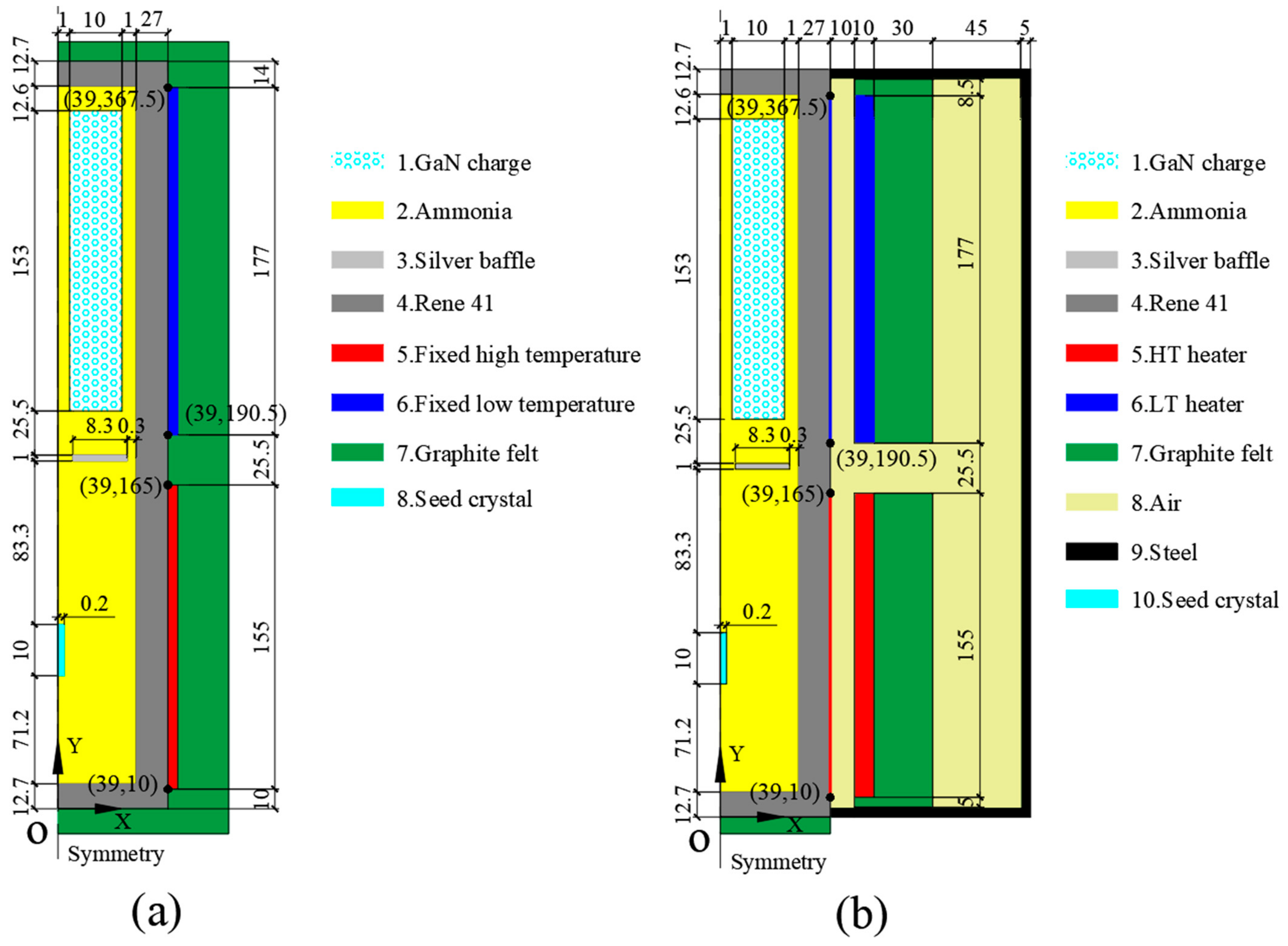
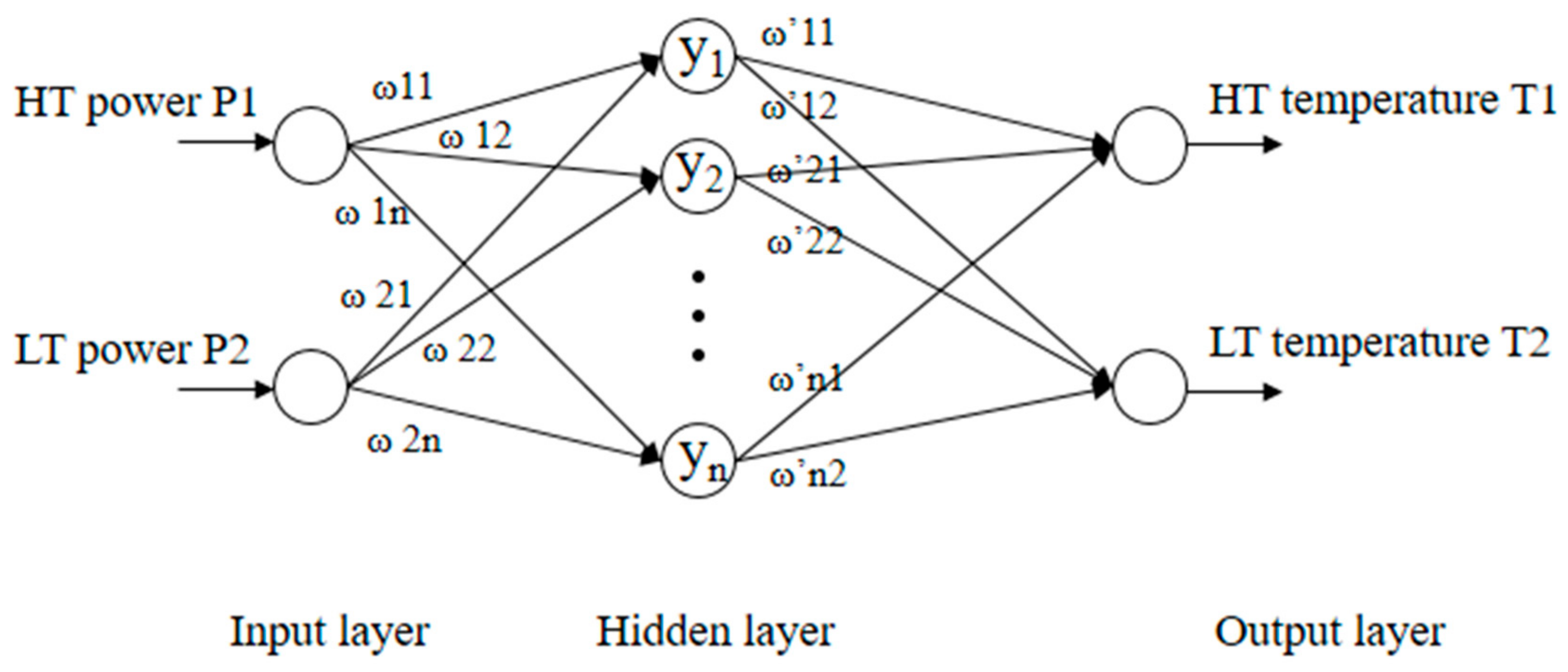
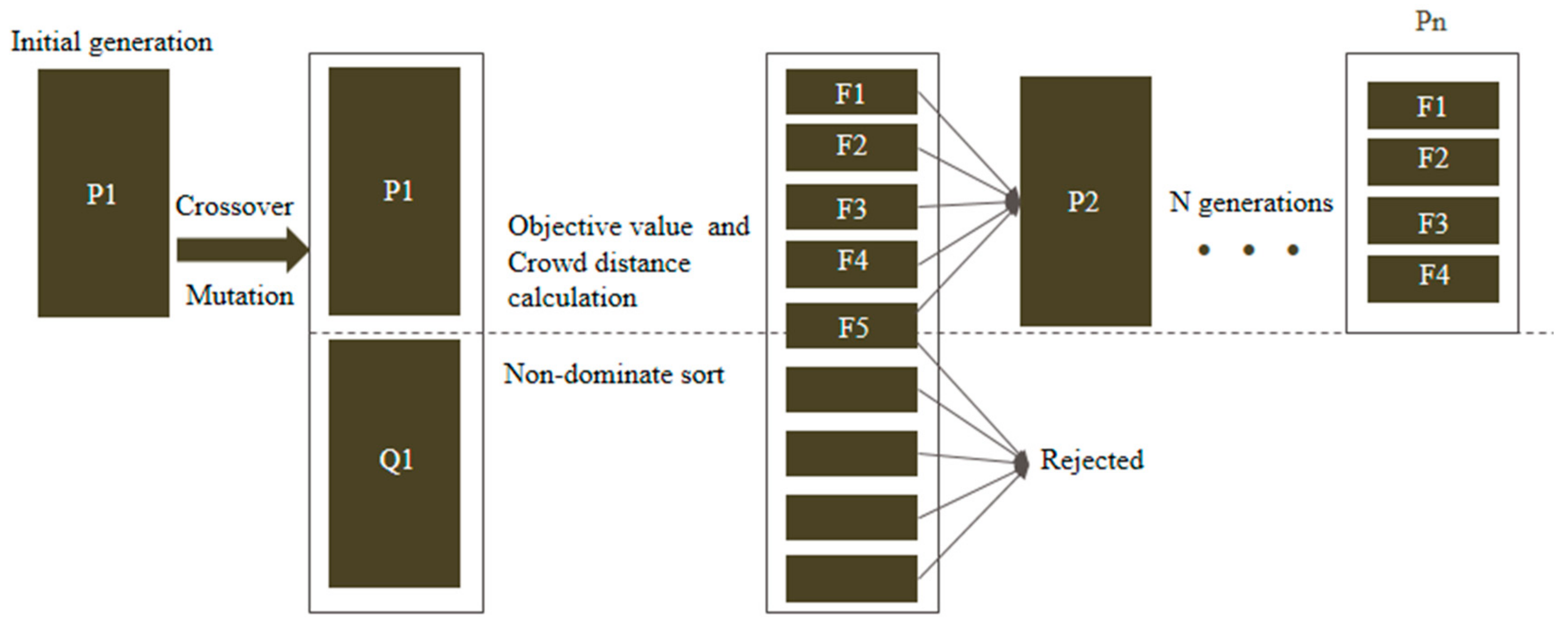
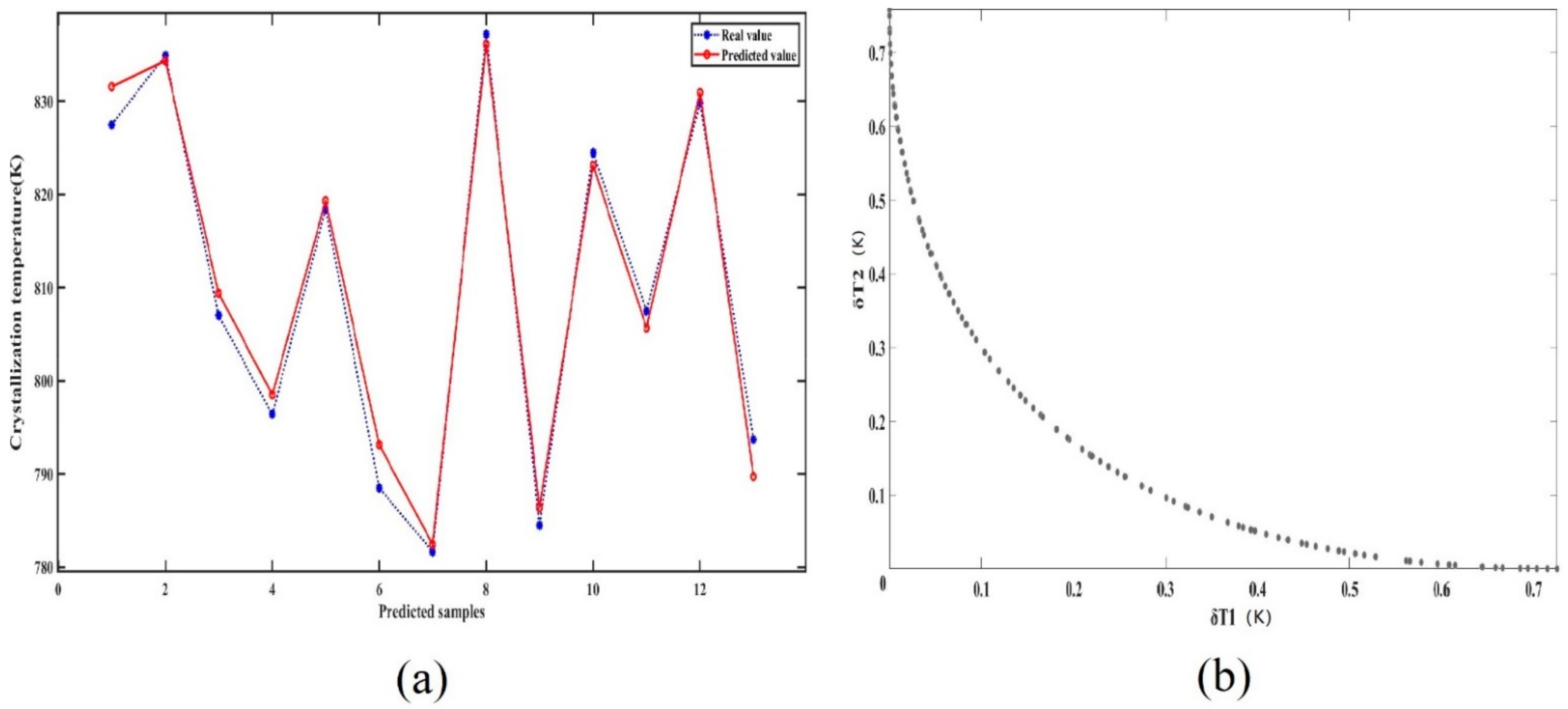

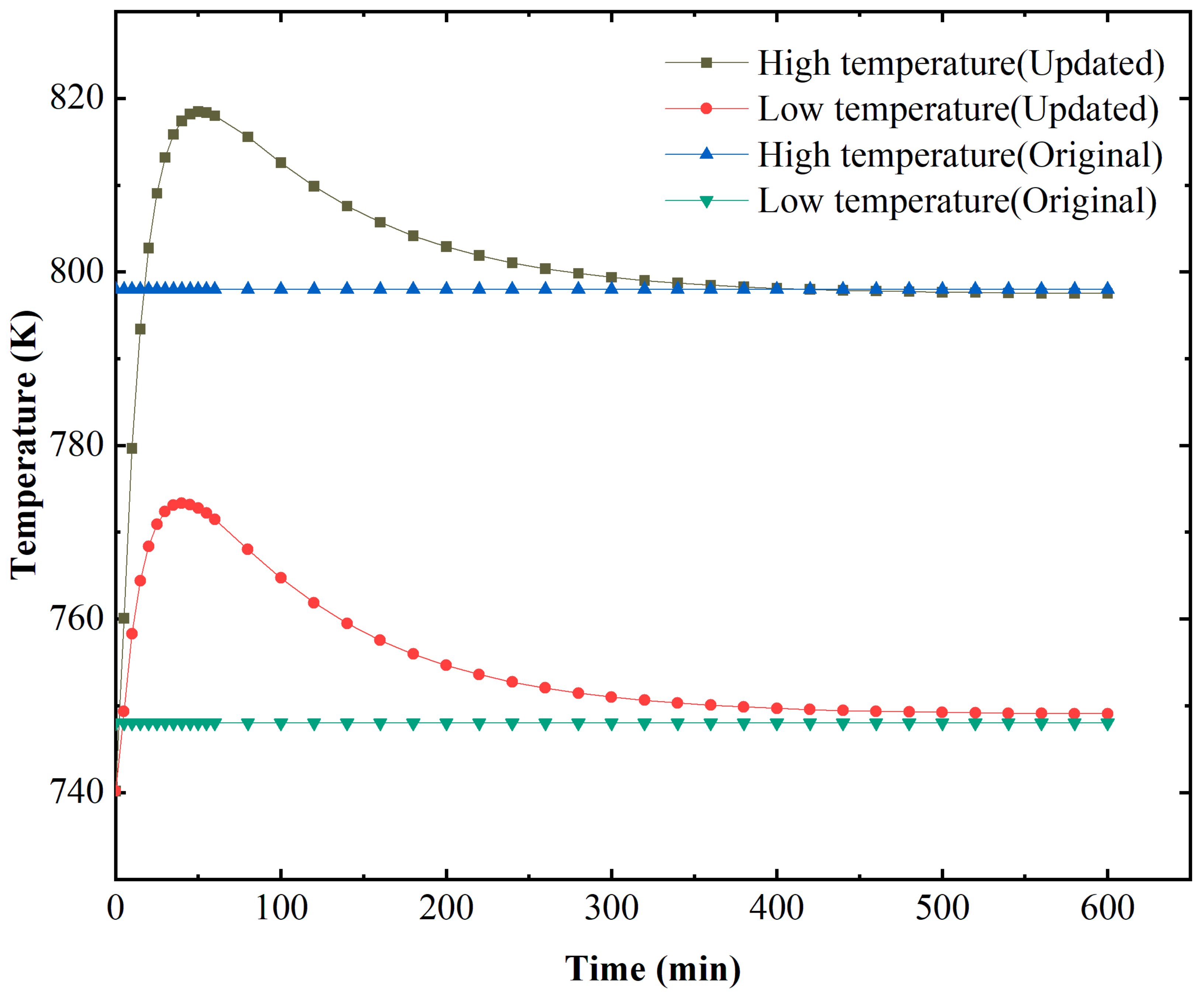
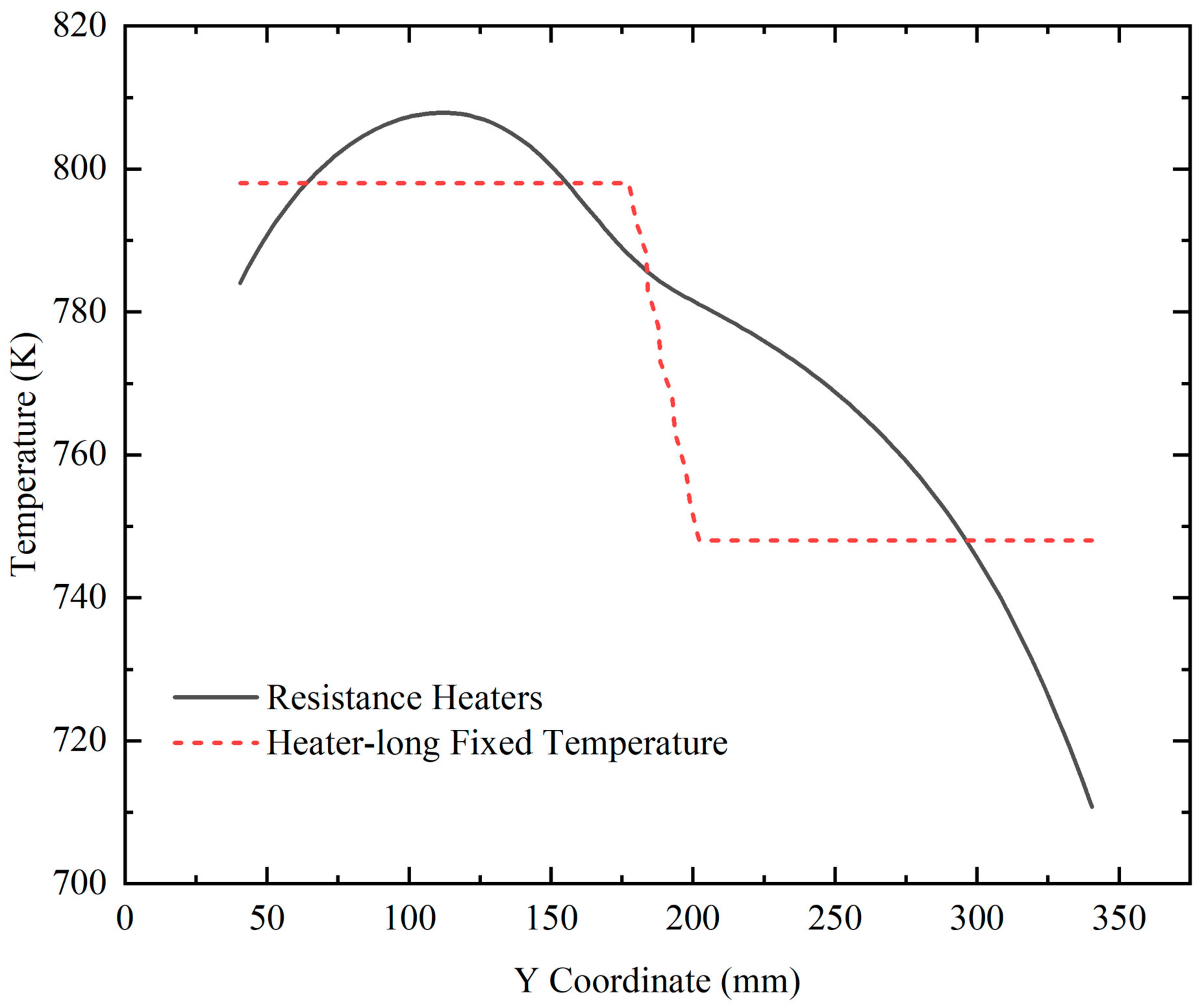
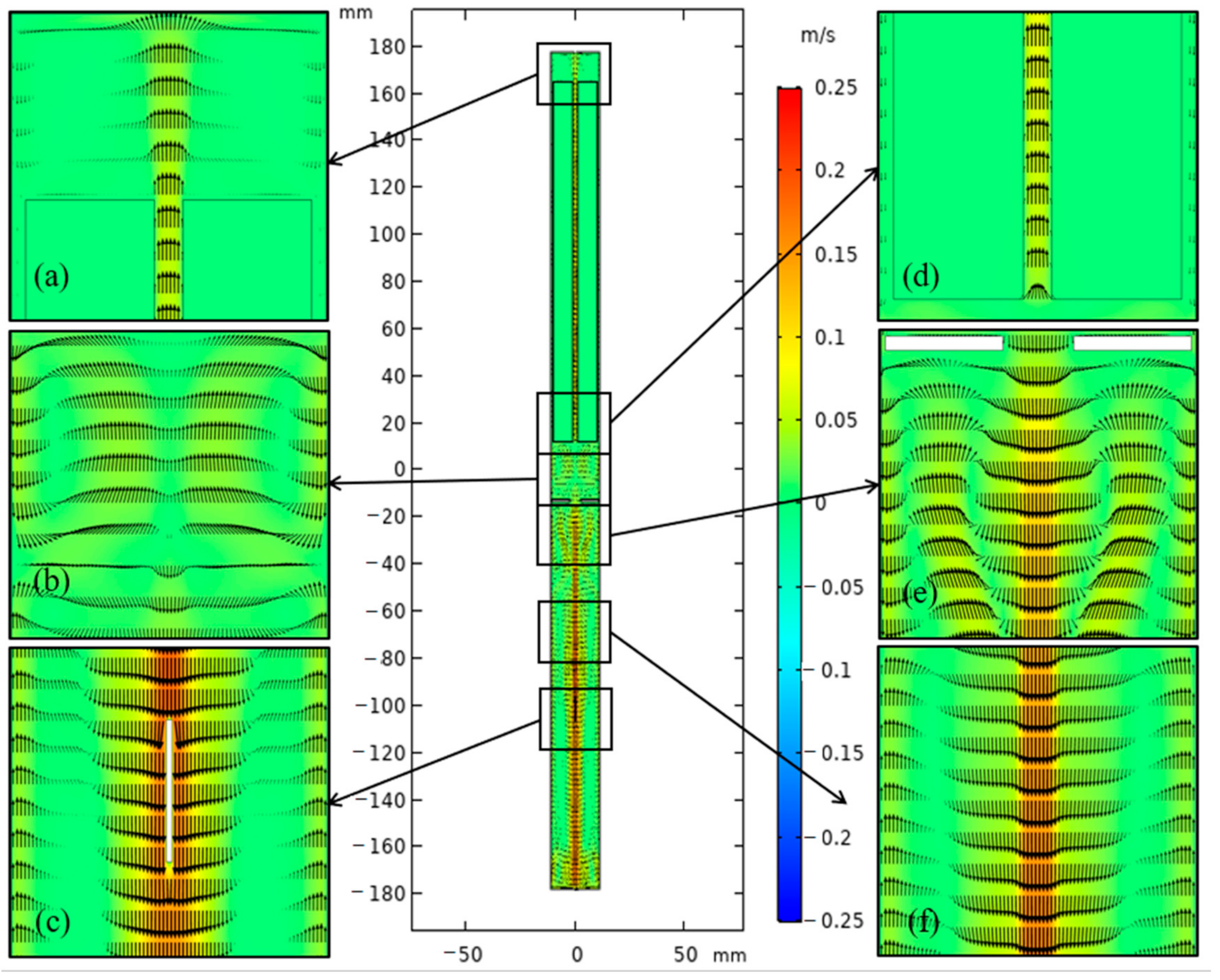

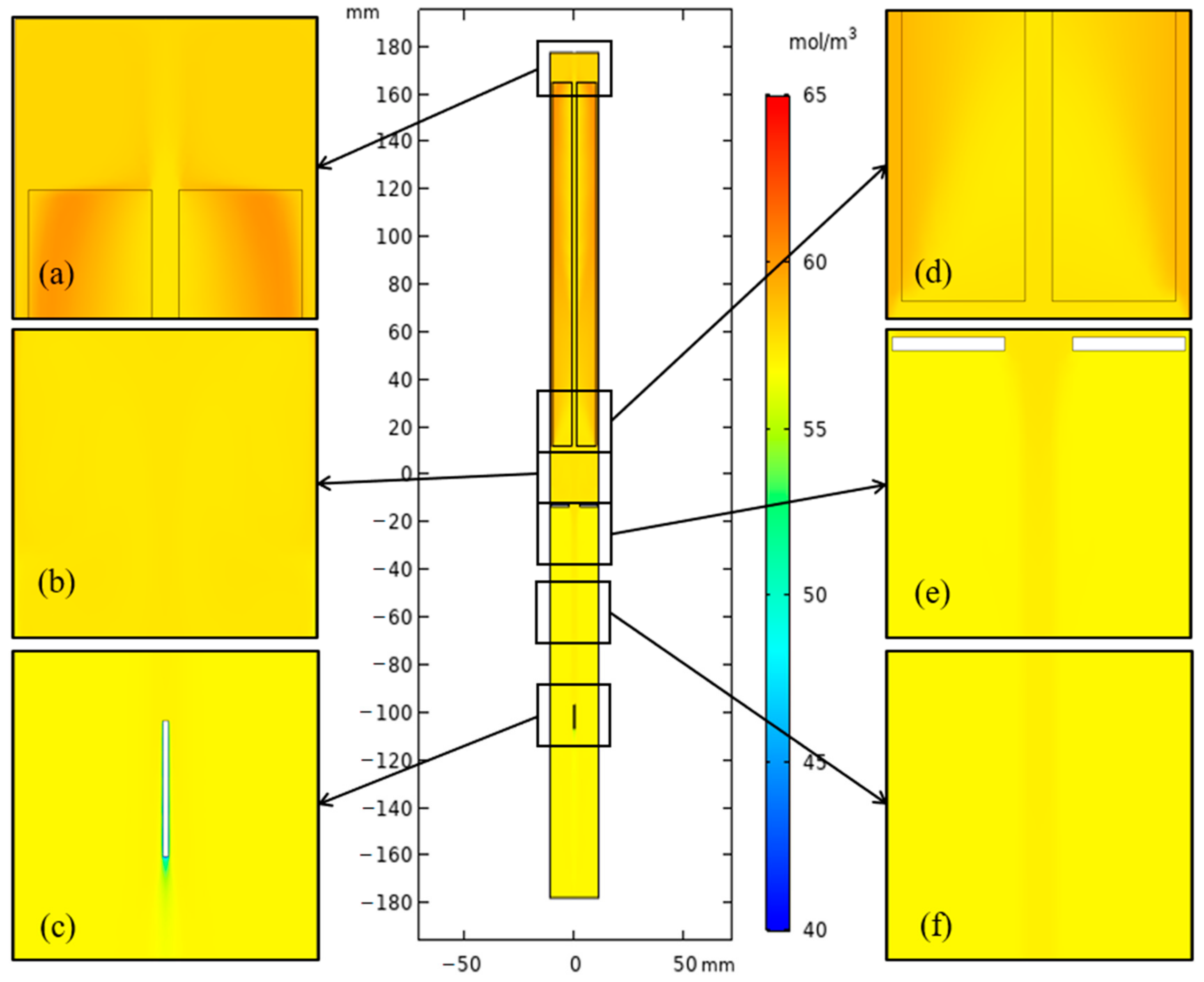

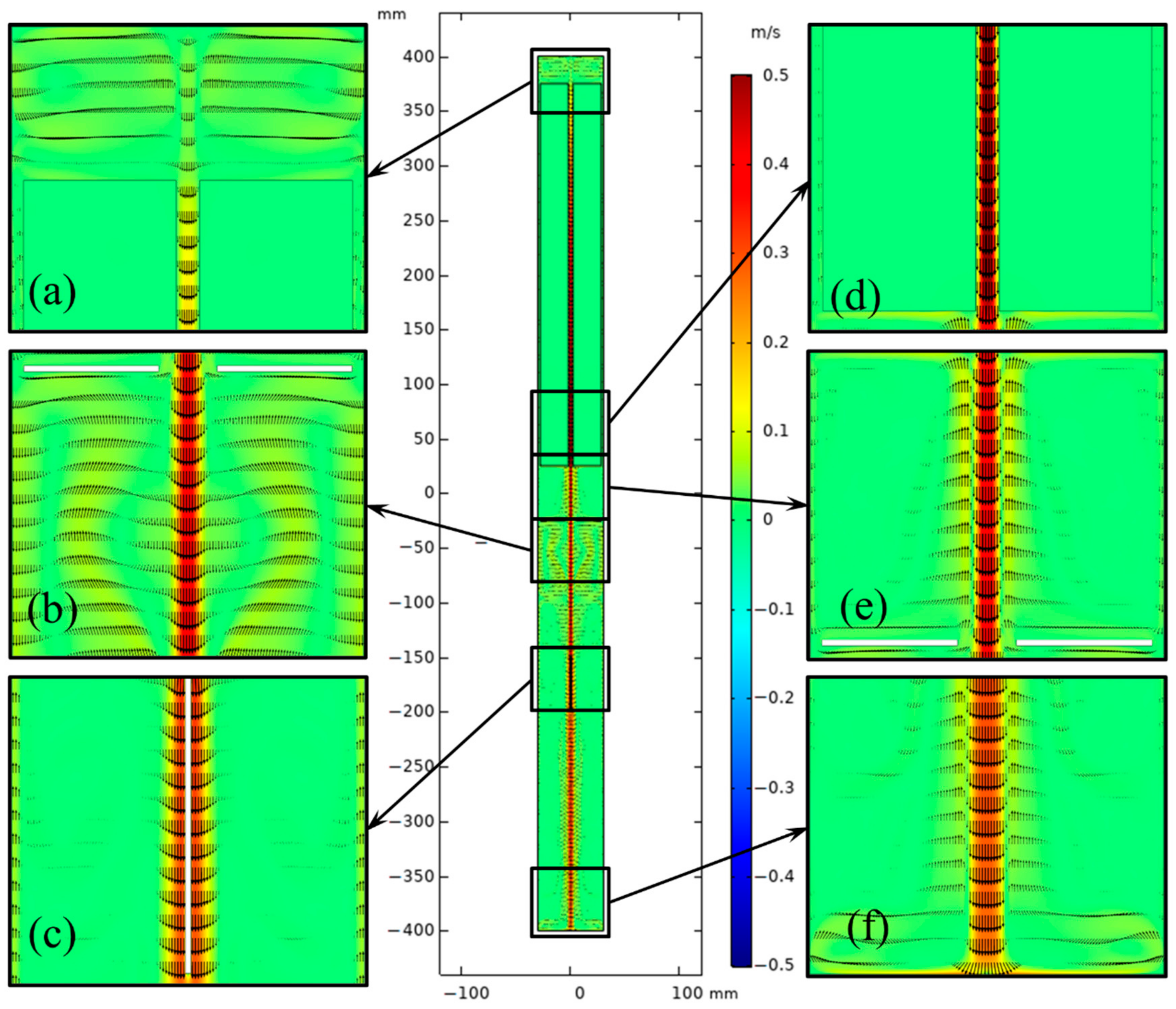
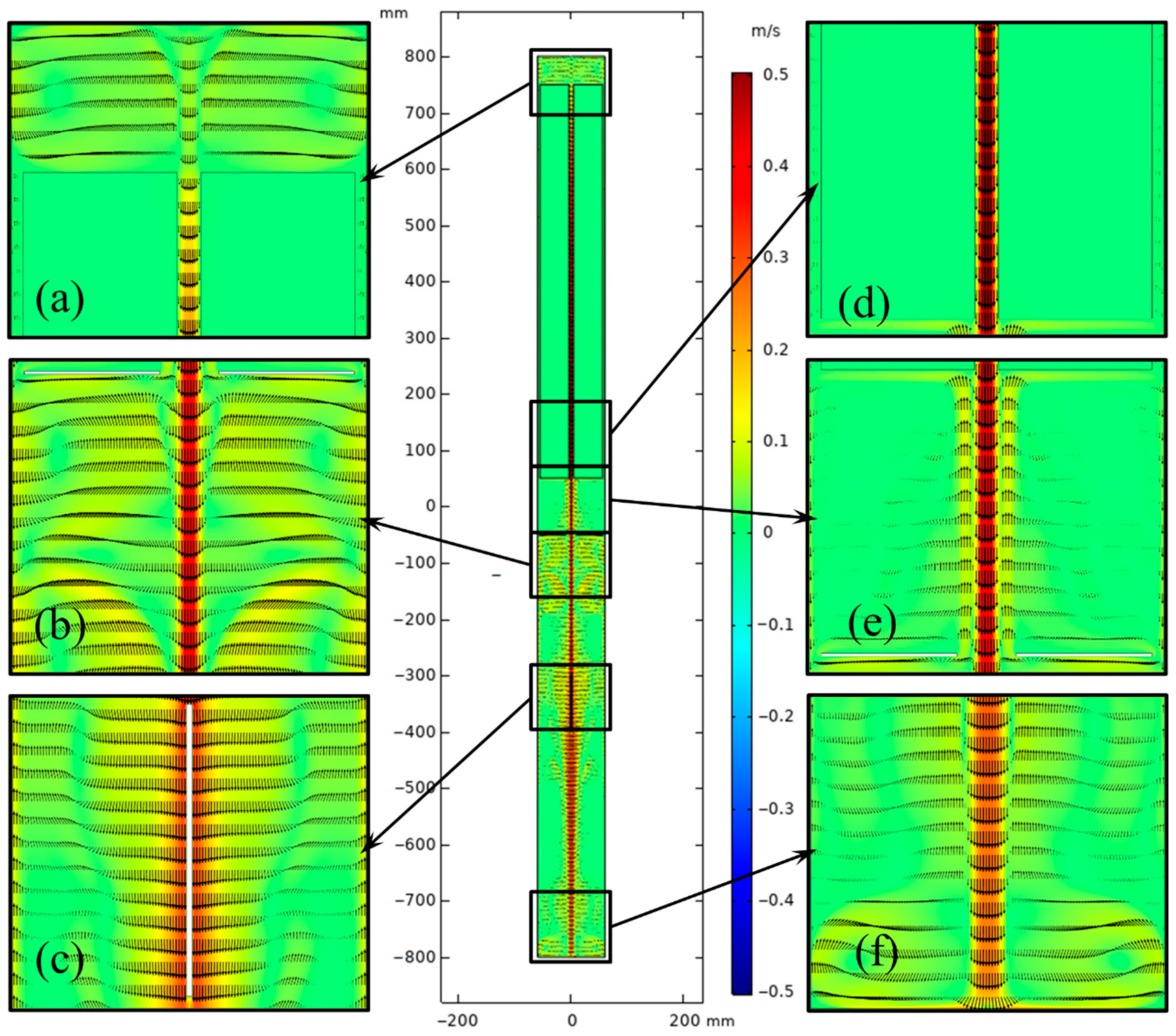
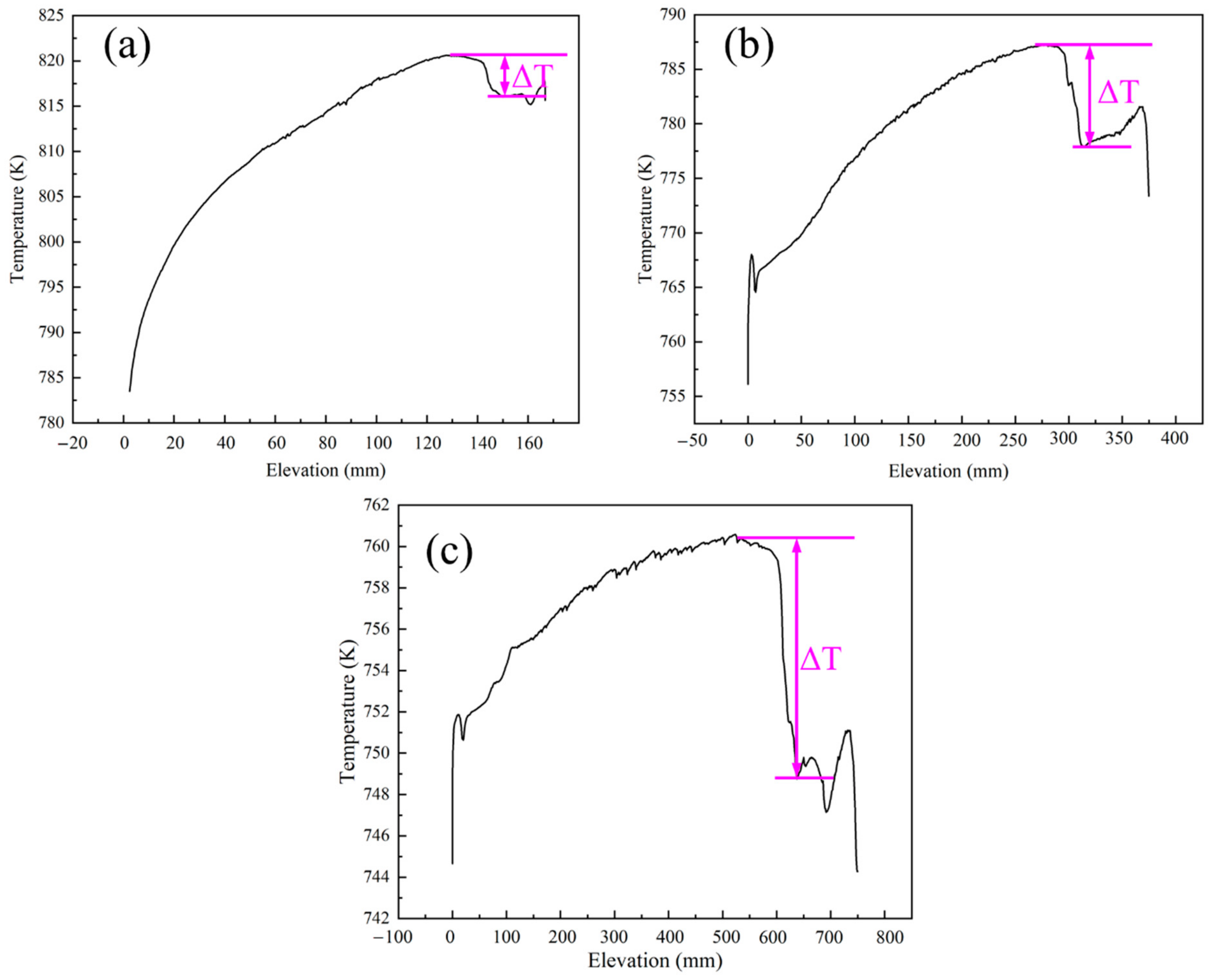
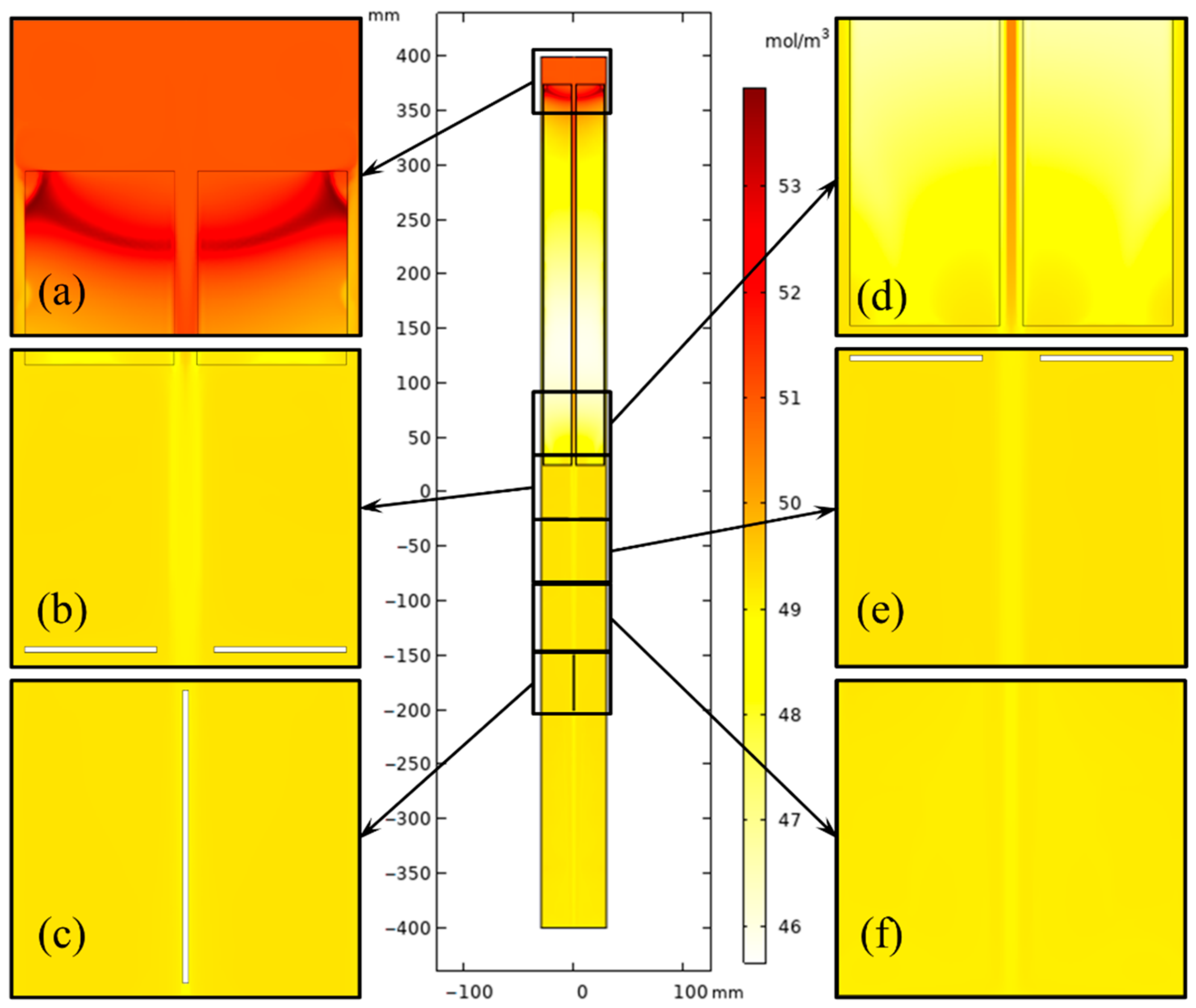
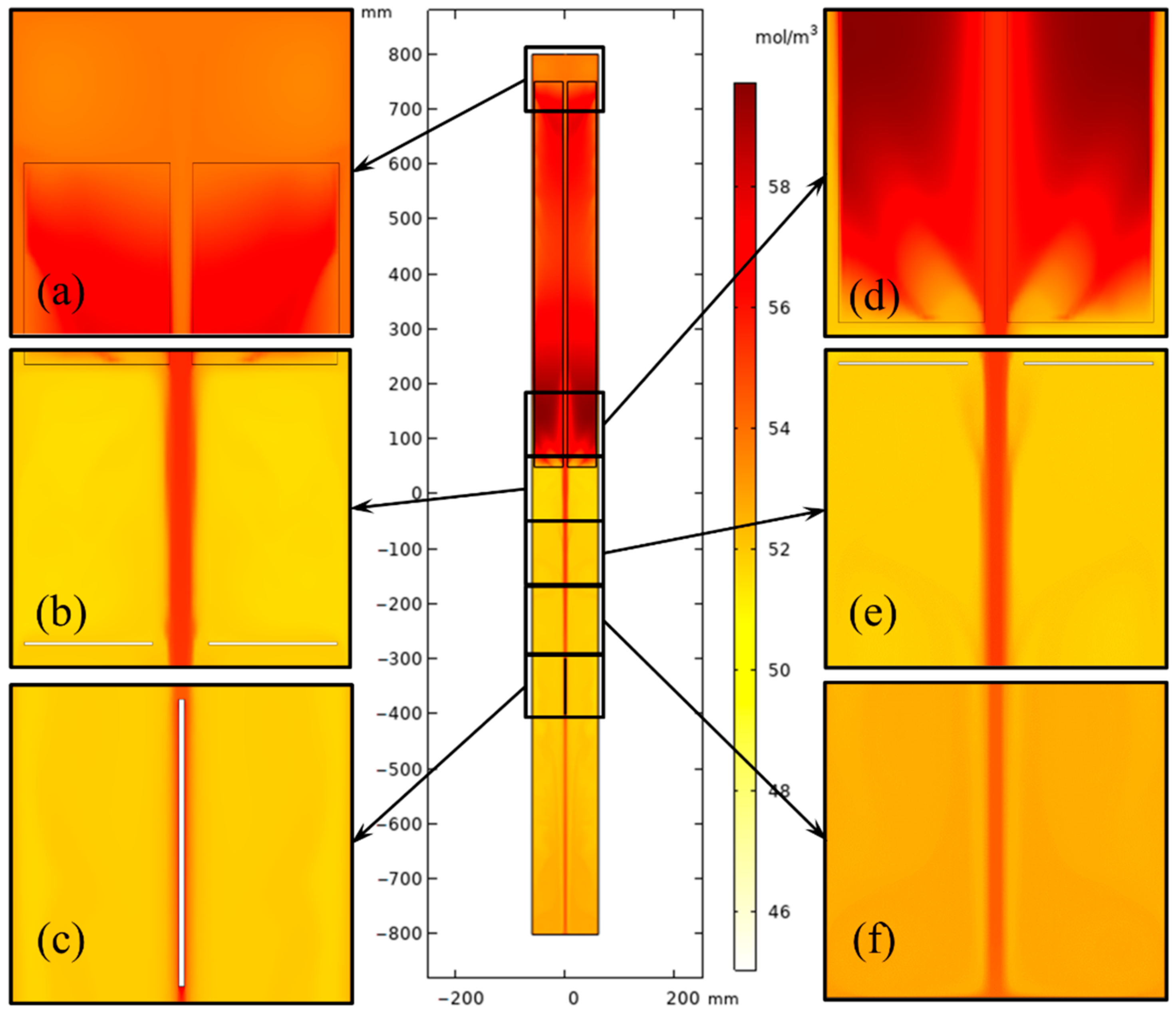

| High-Temperature Heater Power (W) | ||||||
|---|---|---|---|---|---|---|
| Low-temperature heater power (W) | 450 | 460 | 470 | 480 | 490 | |
| 300 | 773.5 | 778.9 | 784.7 | 790.2 | 796.4 | |
| 310 | 776.9 | 781.66 | 788.5 | 794.3 | 800 | |
| 330 | 784.5 | 790.3 | 796 | 801.7 | 807.5 | |
| 350 | 792 | 797.84 | 803.6 | 809.3 | 814.9 | |
| 370 | 799.5 | 805.3 | 811 | 816.7 | 822.4 | |
| 390 | 807 | 812.7 | 818.4 | 824.5 | 829.8 | |
| High-Temperature Heater Power (W) | ||||||
|---|---|---|---|---|---|---|
| Low-temperature heater power (W) | 450 | 460 | 470 | 480 | 490 | |
| 300 | 732.3 | 736.3 | 740.3 | 744.5 | 748.3 | |
| 310 | 738.1 | 742.1 | 746 | 750 | 754 | |
| 330 | 749.7 | 753.6 | 757.5 | 761.5 | 765.4 | |
| 350 | 761.2 | 765.1 | 769 | 772.8 | 776.66 | |
| 370 | 772.5 | 776.4 | 780.2 | 784 | 787.9 | |
| 390 | 783.8 | 787.6 | 791.45 | 795.5 | 799 | |
Publisher’s Note: MDPI stays neutral with regard to jurisdictional claims in published maps and institutional affiliations. |
© 2022 by the authors. Licensee MDPI, Basel, Switzerland. This article is an open access article distributed under the terms and conditions of the Creative Commons Attribution (CC BY) license (https://creativecommons.org/licenses/by/4.0/).
Share and Cite
Han, P.; Gao, B.; Song, B.; Yu, Y.; Tang, X.; Liu, B. Large-Sized GaN Crystal Growth Analysis in an Ammonothermal System Based on a Well-Developed Numerical Model. Materials 2022, 15, 4137. https://doi.org/10.3390/ma15124137
Han P, Gao B, Song B, Yu Y, Tang X, Liu B. Large-Sized GaN Crystal Growth Analysis in an Ammonothermal System Based on a Well-Developed Numerical Model. Materials. 2022; 15(12):4137. https://doi.org/10.3390/ma15124137
Chicago/Turabian StyleHan, Pengfei, Bing Gao, Botao Song, Yue Yu, Xia Tang, and Botao Liu. 2022. "Large-Sized GaN Crystal Growth Analysis in an Ammonothermal System Based on a Well-Developed Numerical Model" Materials 15, no. 12: 4137. https://doi.org/10.3390/ma15124137
APA StyleHan, P., Gao, B., Song, B., Yu, Y., Tang, X., & Liu, B. (2022). Large-Sized GaN Crystal Growth Analysis in an Ammonothermal System Based on a Well-Developed Numerical Model. Materials, 15(12), 4137. https://doi.org/10.3390/ma15124137








